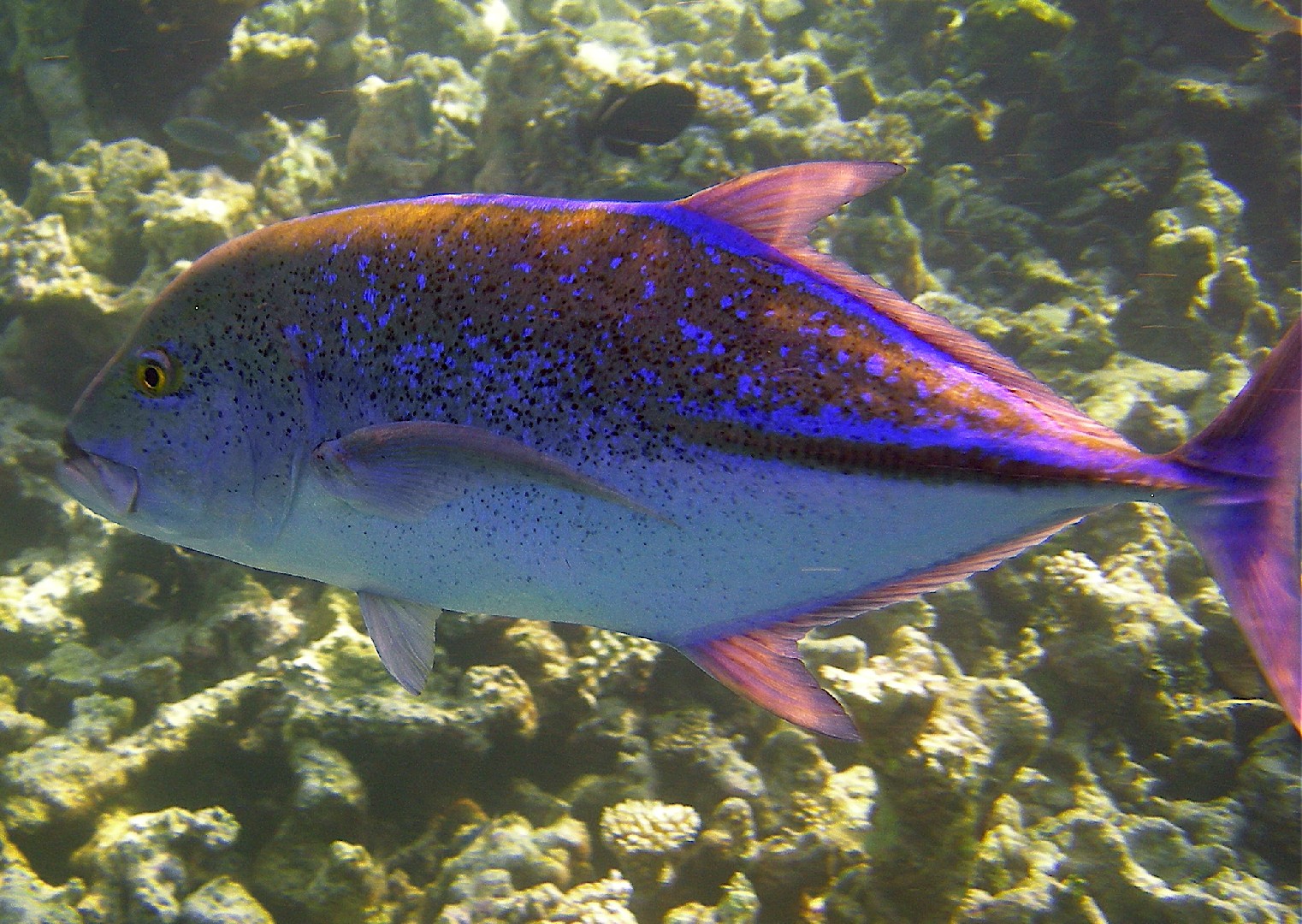Bluefin trevally
A species of Jacks, Also known as Bluefin kingfish, Blue ulua, Spotted trevally Scientific name : Caranx melampygus Genus : Jacks
Bluefin trevally, A species of Jacks
Also known as:
Bluefin kingfish, Blue ulua, Spotted trevally
Botanical name: Caranx melampygus
Genus: Jacks
Content
Description People often ask
 Photo By eNil , used under CC-BY-2.0 /Cropped and compressed from original
Photo By eNil , used under CC-BY-2.0 /Cropped and compressed from original Description
The bluefin trevally is a large fish, growing to a maximum known length of 117 cm and a weight of 43.5 kg, however it is rare at lengths greater than 80 cm. It is similar in shape to a number of other large jacks and trevallies, having an oblong, compressed body with the dorsal profile slightly more convex than the ventral profile, particularly anteriorly. This slight convexity leads to the species having a much more pointed snout than most other members of Caranx. The dorsal fin is in two parts, the first consisting of 8 spines and the second of 1 spine followed by 21 to 24 soft rays. The anal fin consists of 2 anteriorly detached spines followed by 1 spine and 17 to 20 soft rays. The pelvic fins contain 1 spine and 20 soft rays. The caudal fin is strongly forked, and the pectoral fins are falcate, being longer than the length of the head. The lateral line has a pronounced and moderately long anterior arch, with the curved section intersecting the straight section below the lobe of the second dorsal fin. The curved section of the lateral line contains 55-70 scales while the straight section contains 0 to 10 scales followed by 27 to 42 strong scutes. The chest is completely covered in scales. The upper jaw contains a series of strong outer canines with an inner band of smaller teeth, while the lower jaw contains a single row of widely spaced conical teeth. The species has 25 to 29 gill rakers in total and there are 24 vertebrae present. The eye is covered by a moderately weakly developed adipose eyelid, and the posterior extremity of the jaw is vertically under or just past the anterior margin of the eye. Despite their wide range, the only geographical variation in the species is the depth of the body in smaller specimens. The upper body of the bluefin trevally is a silver-brassy colour, fading to silvery white on the underside of the fish, often with blue hues. After they reach lengths greater than 16 cm, blue-black spots appear on the upper flanks of the fish, with these becoming more prolific with age. There is no dark spot on the operculum. The species takes its name from the colour of its dorsal, anal and caudal fins, which are a diagnostic electric blue. The pelvic and pectoral fins are white, with the pectoral fin having a yellow tinge. Juvenile fish do not have the bright blue fins, instead have dark fins with the exception of a yellow pectoral fin. Some juvenile fish have also been recorded as having up to five dark vertical bars on their sides.
* Disclaimer: The judgment on toxicity and danger is for reference only. We DO NOT GUARANTEE any accuracy of such judgment. Therefore, you SHALL NOT rely on such judgment. It is IMPORTANT TO SEEK PROFESSIONAL ADVICE in advance when necessary.
People often ask
Is trevally fish dangerous?
How big does bluefin trevally get?
What color is bluefin trevally?
Scientific Classification
Phylum
Chordates Class
Fish Order
Perch-like fish Family
Trevallies Genus
Jacks Species
Bluefin trevally